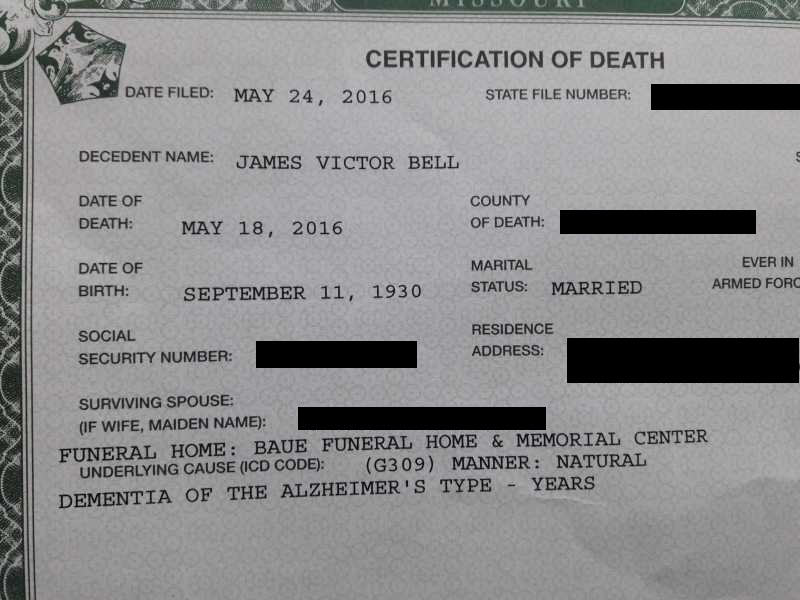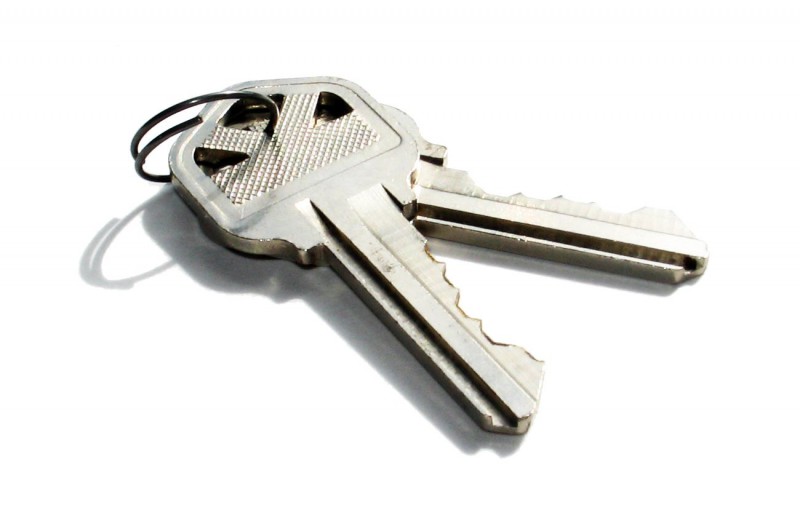Introductory Remarks
The debilitating effects of Alzheimer’s Disease (or other forms of dementia) are probably too familiar for my readership. (For an introduction to Alzheimer’s, see HERE.) Because the symptoms of cognitive decline are so crippling and traumatic, and its downward trajectory so steep, it is not surprising that healthcare workers and medical practitioners are busy trying to discover useful interventions.
Prospective palliatives or treatments fall into two broad categories.
Number one, there are what we might call “conventional” medications, manufactured by companies in the pharmaceutical industry and generally available through a physician’s prescription. One of the first major offerings in this line was the compound known as “tacrine,” sold under the brand name Cognex.
Number two, there are herbal or other more “traditional” concoctions that are, in principle, arguably more accessible. This increased accessibility is due to the fact that, while herbal-based elixirs and pills may be obtained through naturopaths or other “holistic” healers, the plants upon which these formulas are based may be grown and harvested by virtually anyone.[1]
Mainstream Pharmaceuticals
Cholinesterase Inhibitors[2]
“Cholinesterase inhibitors work by increasing the function of certain receptors in the brain that are stimulated by the hormone acetylcholine. They Ritchasonhawth do this by interfering with cholinesterase, the enzyme that breaks down acetylcholine. People with Alzheimer’s disease …develop a shortage of this brain chemical …[C]holinesterase inhibitors …may slow the rate at which the disease worsens.”
(Click the parenthetical names for more specific product information.)
This pill is usually prescribed in doses of 5mg to 10mg and is used for all stages of Alzheimer’s. Normally, it is given at bedtime.
Typically recommended for early to middle-stage Alzheimer’s, it is often taken twice a day (e.g., in the morning and in the evening). Dosages can range from 8mg to 32mg.
Rivastigmine (Excelon)
Like Galantamine, this drug is geared to Alzheimer’s sufferers who are still in early to middle stages. Rivastigmine may be taken in two doses and is usually prescribed in 3-12mg amounts.
This now-unused pharmaceutical was initially offered for early-stage Alzheimer’s. It was not well absorbed, had to be taken on an empty stomach, and required up to four doses totaling between 40 and 160mg daily.
N-Methyl-D-Aspartate (NMDA) Inhibitors[3]
One possible causal factor with Alzheimer’s is the “overstimulation of NMDA receptors in the brain.” Therefore, another class of drugs is the so-called NMDA receptor antagonists or NMDA inhibitors.
Prescribed for mid- to late-stage Alzheimer’s, “Memantine blocks NMDA receptors but it does not stop the nerve degeneration that is a normal part of A[lzheimer’s] D[isease].” It is usually given in doses of 5-20mg per day.
Blends
Memantine/Donepezil (Namzaric)
This is just a blend of the previously described cholinesterase inhibitor Donepezil and the NMDA inhibitor Memantine.
COX-2 Inhibitors – Experimental Usage
One study abstract reports: “It has been demonstrated that a number of inflammatory processes are active in the brain of patients with A[lzheimer’s] D[isease], and therefore it is believed that an anti-inflammatory regimen may offer some degree of neuroprotection. Several studies have indicated that use of nonsteroidal anti-inflammatory drugs (NSAIDs) is associated with delayed onset and/or slowed cognitive decline in AD. Although not currently approved for this condition, recent findings have demonstrated that cyclooxygenase (COX)-2 is of primary importance in the inflammatory response and may have a role in neurodegeneration. Therefore, selective COX-2 inhibitors (coxibs) may have an advantage over traditional NSAIDs as potential therapeutic agents in AD.”[4]
Current COX-2 Inhibitors include:
Celecoxib (Celebrex); Rofecoxib (Vioxx); and Valdecoxib (Bextra).
COX-2 Considered Dangerous?
“Celecoxib (Celebrex) is the only COX-2 inhibitor available in the United States. It is available as a generic. Rofecoxib (Vioxx) and valdecoxib (Bextra) were withdrawn from the market in 2004 and 2005, respectively, because they excessively increased the risk of heart attacks and strokes with long term use.”[5]
Alternatives/Supplementals
Fatty Acids
Caprylic (Octanoic) Acid
This compound is a constituent of goat’s milk (among other animals) and can be found in both coconut and palm-kernel oil as well as in the herb thyme. The idea is that “caprylic triglyceride[s] …can serve as an alternate energy substrate for neuronal metabolism.” In English: it is speculated that caprylic acid can give the brain an energy boost.
Lecithin
“Lecithin is a fat that is essential in the cells of the body. …Lecithin is used for treating memory disorders such as dementia and Alzheimer’s disease.”[6]
Omega 3
“Omega 3” is a general heading for a class of fatty acids that include ALA (alpha-linolenic acid, found in canola and flaxseed oils as well as in certain nuts – like walnuts); DHA (docosahexaenoic acid, found in dairy products and fish); and EPA (eicosapentaenoic acid, found in fish). “Fish oil” capsules usually contain some DHA and EPA. ALA supplements often have to be purchased separately.
Herbs
For an updated and expanded list of herbs, see my “Top Twenty-Five (25) Herbs for Treating (& Avoiding) Alzheimer’s.”
Calamus (Acorus calamus)
“In Chinese medicine, the closely related species Acorus gramineus is known to return clear thought and comprehensibility to cognitive function by removing stagnant phlegm type material. In clinical practice, calamus has been used with head trauma patients to reduce fogginess and help the patient concentrate. No studies have been performed with calamus and dementia, but it may be worth investigation.”[7]
Cat’s claw (Uncaria tomentosa)
“Alzheimer’s disease is characterized by the accumulation in the brain parenchyma [tissue – Ed.] of insoluble fibrillar deposits, ‘plaques,’ that contain the β-amyloid protein. Studies suggest that providing agents or compounds that are capable of inhibiting this assist patients with Alzheimer’s disease. In our search for possible natural inhibitors of β-amyloid fibrillogenesis, we have discovered PTI-00703®, which is a proprietary aqueous extract derived from the bark of the rain forest woody vine known as Ucaria tomentosa or cat’s claw. The purpose of the present study was further to determine the in vivo effects of the plant derivative PTI-00703® on inhibition of β-amyloid fibril formation.”[8]
Clubmoss (Huperzia serrata)
This plant contains a natural cholinesterase inhibitor known as “Huperzine A,” (which entry, see below). “Pure and standardized extracts of this herb have been shown to increase mental acuity, language ability, and memory in a significant percentage of subjects with Alzheimer’s disease.”[9]
Cubeb (Piper cubeba)
This plant is a “[member] of the pepper family” and is used mainly to treat “digestive problems …and chronic bronchitis.”[10] However, “[f]olk medicine uses include treatment …for poor memory.”[11]
Gingko Biloba
Along with rosemary, Gingko is one of the two most potentially useful herbs for treating Alzheimer’s and other memory-related ailments.
“Ginkgo Biloba is a living fossil tree having undergone little evolutionary change over almost 200 million years. While currently it is essentially extinct in the wild, it is widely cultivated for its nut as well as for its leaves. …Extracts of the leaves have been used for 5000 years in traditional Chinese medicine for various purposes. Medicinal extracts are made from dried leaves.”[12]
One study reported: “Based on a quantitative analysis of the literature there is a small but significant effect of 3- to 6-month treatment with 120 to 240 mg of G biloba extract on objective measures of cognitive function in A[lzheimer’s] D[isease].”[13]
“Ginkgo, by improving blood circulation to the central nervous system, aids in the treatment of dementia and Alzheimer’s disease.”[14] “Poor circulation can lead to a host of issues, including …poor memory or decreased cognitive function.”[15]
“…Ginkgo is used …as a brain and mental energy stimulant. The plant is known to increase both peripheral and cerebral circulation through vaso-dilation. Gingko has been used to increase the quality of blood flow to the brain to improve memory. …Gingko biloba stimulates cerebral circulation and oxygenation of cells; hence, mental clarity and alertness …[are] experienced.”[16]
“Extensive research since the 1960s has established the importance of gingko in improving poor cerebral circulation and aiding memory and concentration. Several clinical trials have shown that gingko has real potential for treating dementia, including Alzheimer’s disease, and can be used as a preventive.”[17]
Gotu Kola (Centella asiatica)
Gotu kola has “Traditionally [been] used as a tonic herb that supports …brain health by promoting good memory…”.[18]
“Gotu kola contains substances that are used to build brain chemicals (neurotransmitters) instrumental in memory and learning, and may hold promise in slowing the progression of Alzheimer’s disease.”[19]
“Historically, Gotu Kola is considered to be one of the best herbal nerve tonics. Many people use Gotu Kola to improve their learning ability by facilitating better recall. …Gotu Kola is valued as a nervous system restorative. …Gotu Kola was found to increase mental activity …and to improve memory. …Got Kola is a ‘brain food’ which promotes memory…[It] is effective in the treatment of mental problems dealing with …loss of memory. It is sometimes known as the memory herb because it is known to stimulate circulation to the brain.”[20]
Juniper (Juniperus communis)
“Herbalist John Christopher …used juniper to strengthen the brain, memory and optic nerve.”[21]
Lesser Periwinkle (Vinca minor)
“Lesser periwinkle contains the alkaloid vincamine, which has shown some benefit to people with Alzheimer’s disease. Lesser periwinkle contains the alkaloid vincamine. …[V]incamine …was shown to be beneficial in a …double-blind trial.”[22]
The Herbal PDR adds: “Periwinkle is used internally for …cerebral circulatory impairment and support for the metabolism of the brain. It is also used internally for loss of memory…”.[23]
Lemon Balm (Melissa officinalis)
According to the 17th-century English diarist and horticulturist John Evelyn: “Balm is sovereign for the brain, strengthening the memory…”.[24]
Rhodiola (Rhodiola rosea)
There is some evidence to suggest that Rhodiola supplementation may result in a “statistically significant improvement” in patients suffering from “…cognitive deficiencies.”[25]
Rosemary (Rosemarinus officinalis)
Well known to those who know their ways around a kitchen, Rosemary “Leaves may be used (fresh or dried) in a variety of cooking applications such as stews, breads, stuffings, [and] herbal butters or vinegars. Leaves also provide excellent flavor to meats, fish and vegetables. …Rosemary has a long history of uses for a variety of medicinal and curative applications…”.[26] For example, “Rosemary is used in folk medicine for …poor memory.”[27]
“In ancient Greece, Rosemary was believed to strengthen the memory. …In the Middle Ages, in Europe, Rosemary was used …to help weak memory …Rosemary is …a string brain and memory stimulant.”[28]
“Rosemary helps increase the oxygen supply to the brain, thus sharpening concentration and memory.”[29]
According to “botanist James A. Duke…[, rosemary prevents] the breakdown of acetylcholine. …[In fact,] rosemary contains nearly a dozen different aromatic chemicals that protect against …[acetylcholine] breakdown. …[But,] the aromatic plant chemicals found in rosemary are not only absorbed orally. They’re absorbed through the pores in the scalp! Dr. Duke realized that at least some of these phytochemicals would get from the scalp into the bloodstream, and from the bloodstream into the brain.”[30] So, besides ingesting rosemary, “using a shampoo infused with its oil [might] help preserve memory.”[31]
Sage (Salvia officinalis)
Another staple of the spice rack, “[i]t is considered a memory strengthener… It has been thought associated with longevity and as restoring failing memories of the elderly. …It is beneficial for mental exhaustion and strengthening the ability to concentrate. It improves memory…”.[32]
“Laboratory studies suggest that sage may be useful in preventing the onset of Alzheimer’s disease.”[33]
For more, see: “Top Twenty-Five (25) Herbs for Treating (& Avoiding) Alzheimer’s.”
Miscellaneous Supplements
Acetylcholine
This chemical is a neurotransmitter. As discussed in the section on cholinesterase, acetylcholine insufficiency is widely believed to be a contributing factor to the onset of Alzheimer’s. “We’ve known for a long time that acetylcholine is low in people with Alzheimer’s disease.”[34] It is possible to supplement with acetylcholine directly. “So[,] if you can keep your acetylcholine levels high, you’re going a long way to maintain and even improve your memory.”
Coenzyme Q10 (Ubiquinone)
Coenzyme Q10, or “COQ10,” has antioxidant properties, “[i]ncreases oxygenation of cells and is involved in the generation of cellular energy.”[35]
Homotaurine
One fairly intimidating abstract – somewhat truncated – indicated: “Homotaurine, a small aminosulfonate compound that is present in different species of marine red algae, has been shown …to provide a relevant neuroprotective effect …[A]nalyses have shown positive and significant effects of homotaurine …including a reduction in hippocampal volume loss and lower decline in memory function …as well as a reduction in global cognitive decline in APOE4 allele carriers…”.[36]
Translation:
Huperzine A
This compound reputedly “[i]mproves cognitive functions and may improve short-term memory.”[37] See Clubmoss (above).
Phosphatidylserine
“Phosphatidyl Serine (PS) is a substance classified as phospholipid (a phosphorous-containing lipid) that is needed by every cell in the body, and is especially abundant in nerve cells. …PS …production dwindles as we age… Supplemental PS …has been said to reduce symptoms of …Alzheimer’s disease…”.[38]
Some Caveats
Different types of Alzheimer’s?
One Dr. Dale Bredesen postulates that “Alzheimer’s Disease” is really a constellation of distinguishable conditions. He states that some “…people who have dementia are associated with chronic inflammation, which we call ‘type 1’ or ‘inflammatory Alzheimer’s.’ And people who have problems with ‘trophic loss’ so that you’ve got a situation where you’re withdrawing trophic support, be it from estradiol, vitamin D, B12, testosterone, what have you, that is associated with cognitive decline, or what we call ‘type 2.’ Or, people who have essentially sugar toxicity we call ‘type 1.5’ because it has both some inflammation and also trophic loss and insulin resistance. And then we also found a subgroup of people whose main problem is toxic exposure, be it from biotoxins like mycotoxins, or things like mercury, you can see that these people have the decline and until you treat that and remove it you will not see improvement.”[39] This latter sort is “type 3.”
On this taxonomy, one might think that “Type 1” Alzheimer’s could respond well to anti-inflammatories. This is perhaps part of the motivation (mentioned above) in testing to so-called “COX-2 inhibitors.” However, keep in mind that are herbal (and other) anti-inflammatories as well.
These might include: Aloe Vera (Aloe vulgaris), Beta-Glucan, Bilberry (Vaccinium myrtillus), Boswellia (Boswellia serrata), Bromelain (Bromelia comosa), Garlic (Allium sativum), Grape (Vitus vinifera), Olive Leaf (Olea europaea), Selenium, Turmeric (Curcuma longa), and Vitamin E (Alpha-Tocopherol).
What Dr. Bredesen calls a lack of “trophic support” may be otherwise termed nutrient deficiency. This implies, though, that those suffering from this type of Alzheimer’s could be helpfully supported by nutrient-rich (“super”) foods, vitamin and mineral supplements, etc.
Common superfoods include: Acai Berries (Euterpe oleracea), Almonds (Prunus dulcis), Apples (Malus pumila), Asparagus (Asparagus officinalis), Avocado (Persea americana), Blackberries (Rubus fruticosus), Blueberries (Vaccinium cyanococcus), Broccoli Sprouts (Brassica oleracea), Brown Rice (Oryza sativa), Brussels Sprouts (Brassica oleracea), Chia Seeds (Salvia hispanica), Cocoa (Theobroma cacao), Cranberries (Vaccinium oxycoccus), Eggs (Gallus gallus domesticus), Flaxseed (Linum usitatissimum), Garlic (Allium sativum), Ginger (Zingiber officinale), Green Tea (Camellia sinensis), Kale (Brassica oleracea), Kefir,[40] Kiwi (Actinidia deliciosa), Lentils (Lens culinaris), Microgreens,[41] Mushrooms,[42] Olive Oil (Olea europaea), Salmon,[43] Seaweed,[44] Spinach (Spinacia oleracea), Sweet Potato (Ipomoea batatas), Quinoa (Chenopodium quinoa), Turmeric (Curcuma longa), Walnuts (Juglans regia), and Watermelon (Citrullus lanatus).
Finally, “Topic 3” – on the contemplated taxonomy – has its genesis in overexposure to environmental or other toxins. It stands to reason, then, that detoxification herbs might be useful.
Such plants include: Burdock (Arctium lappa), Cilantro (Coriandrum sativum), Cleavers (Galium aparine), Cranberries (Vaccinium oxycoccos), Dandelion (Taraxacum officinale), Eucalyptus (Eucalyptus globulus), Figwort (Scrophularia nodosa), Goldenrod (Solidago rigida), Ground Ivy (Glechoma hederacea), Lemon (Citrus limon), Milk Thistle (Silybum marianum), Neem Leaf (Azadirachta indica), Nettle (Urtica dioica), Parsley (Petroselinum crispum), Red Clover (Trifolium pratense), White Clover (Trifolium repens), Wood Betony (Stachys officinalis), Wormwood (Artemisia absinthium), and Yellow Dock (Rumex crispus).
Calcium: Yay or Nay?
According to the Alzheimer’s Association: “‘Coral’ calcium supplements have been heavily marketed as a cure for Alzheimer’s disease, cancer and other serious illnesses.”[45] Besides “coral,” another source of calcium appears to be deer and elk antler. “The ground products are rich in calcium… The elixir of antler velvet, according to Chinese medicine, will …[increase] …memory…”.[46]
On the other hand, some literature points the finger for Alzheimer’s onset at calcium. “Sticky clumps of protein called amyloid usually get the blame for causing Alzheimer’s disease. But the real culprit may be calcium, according to a pair of studies published in the research journals Cell and Neuron. …In order to stay healthy, brain cells need to maintain just the right amount of calcium at any given moment. That depends on the cells responding to signals from elsewhere in the brain. [Kevin] Foskett [of the University of Pennsylvania] and others say an abnormal response to these signals leads to abnormal calcium levels in brain cells, which ultimately leads to Alzheimer’s.”[47]
Two Perspectives on ‘Evidence’
Since we have gotten into a discussion of “alternative” supplements, it seems prudent to say something about evidence. The importance of these concluding comments became apparent to me when I surveyed some of the information available online concerning pharmaceutical alternatives.[48] Some websites repeatedly use phrases such as “there’s no scientific evidence that [such and such].” However, this is typically stated without any further comment about what, exactly, is meant by “scientific evidence” or, to put it bluntly, why anyone should care that there “isn’t any” for some supplement (if, indeed, this is true).
As it happens, there are several views about what “scientific evidence” amounts to. In fact, there are many different views that a person could hold on what constitutes “evidence” (simpliciter). For our purposes, let’s say (provisionally) that “evidence” just means something that raises the probability that some claim is true. “Scientific evidence,” then, is those probability raisers that the institution of science acknowledges, discovers, produces, or otherwise “deals with.”
This is a large debate in a branch of philosophy known as epistemology (i.e., the study of how human beings know things). The general question is how much weight to give to “scientific evidence.” Ancillary questions include: Should such evidence be privileged? Is it somehow the “purest” or most “reliable” sort of evidence? Etc.
I cannot hope to settle any of these matters, here. I won’t even try. In what follows, I will merely sketch two competing outlooks in this debate as it pertains to the topic at hand. My aim is simply to make readers aware that there is a debate – since some websites (for whatever reasons) do not mention it.
Perspective 1: The Only Evidence That Matters is Scientific Evidence
People who take this view are going to hold that scientific – and, especially, clinical – evidence is the only sort that should make any difference to our credences. In other words, if you want to know whether it would be worthwhile to take an alternative supplement, you ask one main question: What do the clinical trials show?
The underlying idea is something like the following. All questions about healthcare are a matter of science. All questions about pharmaceuticals and supplements are questions about healthcare. Therefore, all questions about pharmaceuticals and supplements are matters of science.
Of course, not all clinical trials are equally impressive. So, there’s bound to be a bit of subtlety. For instance, there’s a difference between a substance that has been put through “Phase Three” trials and one that has only gone through “Phase Two” trials. Or again, perhaps the Food and Drug Administration (FDA) has a cachet that outweighs studies conducted in the private sector. And so on.
But, these niceties aside, if Supplement x has clinical, scientific evidence in its favor, then a person taking Perspective 1 will – on balance – be more willing to acknowledge x as a viable option than he or she would be if x has little to nothing by way of such data.
It is worthy noting, though, that a person taking Perspective 1 might still doubt the importance – or the objectivity – of certain clinical trials. For instance, such a person might suspect that various government agencies or private enterprises are – because of financial or political reasons – compromised and unable to carry out, plan, or report on studies in a truly scientific manner.
Perspective 2: While Scientific Evidence Is Important, Other Evidence Should Count Too
But Perspective 1, while widespread (and perhaps even the default view among certain healthcare professionals), is by no means the only defensible position. Another point of view is that – yes – scientific evidence is a certain (and important) sort of evidence, but it is not the only kind.
A person holding this point of view may point out that we believe all sorts of things that are not susceptible to scientific scrutiny in the usual sense. For instance, there is no scientific test that can show that my mom loves me. Perhaps more intriguingly, there is no scientific evidence that demonstrates that one must have scientific evidence for a belief. In other words, according to Perspective 2, someone who elevates scientific evidence above other kinds of evidence does so apart from scientific evidence in the strict sense.
However, a Perspective-1 person might think that healthcare really is a matter for science – as our previous argument seemed to indicate. What could a Perspectibe-2 person say in reply? There are at least three possible tacks.
Number one, a Perspective 2 individual could agree with his or her Perspective-1 counterpart. Such a person might say: “Yes, healthcare is a matter for science.” Other evidence might support non-healthcare-related beliefs, but as far as healthcare-related beliefs go, scientific evidence is the only game in town. And that’s that. Because of the way that I have defined Perspective 2, nothing stands in the way of a Perspective-2 person reaching this sort of conclusion. But it’s not the only possible route.
Number two, a person holding Perspective 2 might reject the argument given earlier. In its place, the Perspective-2 theorist might say something like this. Some questions about healthcare are not matters of science. All questions about healthcare are questions about human experience. Therefore, some questions about human experience are not a matter of science.
What does this mean? Well, you could think of it this way. If folk tradition has it that – for hundreds or thousands of years – people have been using supplement x to treat ailment y, then we have folk evidence that x treats y.
Could this “folk evidence” be good enough for us to turn to x if we suffer from y? For the Perspective-1 person, then answer will surely be no. But, for the Perspective-2 person, the answer could be yes.[49]
Disclaimers
In this article, I survey the landscape of available pharmaceuticals and alternatives. Of course, I am incompetent to recommend – let alone “prescribe” – any treatment plan to anyone. Your, or your loved one’s, situation and medical history are unique. Specific health-related questions should be directed to trusted medical professionals who base their opinions on direct evaluations and physical examinations. Herbals, pharmaceuticals, and other substances may have drug interactions and other side effects. These possibilities need to be discussed with your doctor. This material is provided as-is for general informational purposes only. ALZHEIMERSPROOF.com is not responsible for anyone’s bad reactions to any drug, plant, product, or vitamin listed herein. Use the information at your own risk!
Further Reading:
Notes:
[1] Of course, you have to have suitable conditions (climate, sunlight, soil, etc.) and be willing to put in the time and effort.
[2] Appetite loss; Diarrhea; Headache; Nausea; Vomiting; Weight loss
[3] NMDA Side Effects: Breathing difficulties; Confusion; Constipation; Dizziness; Fatigue; Headache; High blood pressure; Vomiting.
[4] P. S. Aisen, “Evaluation of Selective COX-2 Inhibitors for the Treatment of Alzheimer’s Disease,” Journal of Pain Symptom Management, Vol. 23, No. 4, Supplement, Apr., 2002, pp. S35-40, <https://www.ncbi.nlm.nih.gov/pubmed/11992749>.
[5] Omudhome Ogbru, “Cox-2 Inhibitors,” Jay Marks and Charles Patrick Davis, eds., Medicine Net, <https://www.medicinenet.com/cox-2_inhibitors/article.htm#what_drugs_interact_with_cox-2_and/or_nsaids?>.
[6] “Lecithin,” WebMD, <https://www.webmd.com/vitamins/ai/ingredientmono-966/lecithin>.
[7] J. J. Pursell, The Herbal Apothecary: 100 Medicinal Herbs and How to Use Them, Portland, Ore.: Timber Press, 2015, pp. 82-83.
[8] Gerardo Castillo, Daniel Kirschner, Ann Yee, and Alan Snow, “Electron Microscopy and X‐ray Diffraction Studies further Confirm the Efficacy of PTI‐00703® (Cat’s Claw Derivative) as a Potential Inhibitor of Alzheimer’s β‐Amyloid Protein Fibrillogenesis,” Apr., 2002, <https://www.researchgate.net/publication/229941902_Electron_Microscopy_and_X-ray_Diffraction_Studies_further_Confirm_the_Efficacy_of_PTI-00703R_Cat%27s_Claw_Derivative_as_a_Potential_Inhibitor_of_Alzheimer%27s_b-Amyloid_Protein_Fibrillogenesis>; in book Khalid Iqbal, Sangram S. Sisodia, and Bengt Winblad, eds., Alzheimer’s Disease: Advances in Etiology, Pathogenesis and Therapeutics, Hobken, N.J.: Wiley, 2001, pp. 449-460.
[9] Balch, op. cit., p. 197.
[10] Andrew Chevallier, Encyclopedia of Herbal Medicine, 2nd Ed., New York: DK Publ., p. 249.
[11] Joerg Gruenwald, et al., eds., PDR For Herbal Medicines (hereinafter “Herbal PDR”), 4th Ed., Montvale, N.J.: Thomson Healthcare, 2007, p. 243.
[12] B. S. Oken, D. M. Storzbach, and J. A. Kaye, “The Efficacy of Ginkgo Biloba on Cognitive Function in Alzheimer Disease,” Archives of Neurology (now known as JAMA Neurology), Vol. 55, No. 11, 1998, pp. 1409-1415.
[13] Ibid.
[14] Jack Ritchason, The Little Herb Encyclopedia: The Handbook of Nature’s Remedies for a Healthier Life, 3rd Ed., Pleasant Grove, Utah: Woodland Health Books, 1995, p. 99.
[15] Pursell, op. cit., p. 112. Incidentally: “Hawthorn [Crataegus laevigata] is indicated …as a good choice to increase blood flow to areas that need it,” ibid.
[16] Ritchason, op. cit., p. 100.
[17] Chevallier, op. cit., p. 102.
[18] Tammi Hartung, Homegrown Herbs: A Complete Guide to Growing, Using, and Enjoying More Than 100 Herbs, North Adams, Mass.: Storey Publ., 2015, p. 197.
[19] “Gotu Kola,” Cloverleaf Farm, Dec. 23, 2010, <https://www.cloverleaffarmherbs.com/gotu-kola/>.
[20] Ritchason, op. cit., p. 110.
[21] Pursell, op. cit., p. 120.
[22] “Periwinkle,” Michigan Medicine, May 24, 2015, <https://www.uofmhealth.org/health-library/hn-3659003>.
[23] Herbal PDR, op. cit., p. 645.
[24] Rosemary Gladstar, Rosemary Gladstar’s Medicinal Herbs: A Beginner’s Guide, North Adams, Mass.: Storey Publ., 2012, p. 157; citing John Evelyn, 1679. Cf. Penelope Ody, The Complete Medicinal Herbal, London: Dorling Kindersley, 1993, p. 78.
[25] Herbal PDR, op. cit., p. 703.
[26] “Rosemary officinalis,” Missouri Botanical Garden, <http://www.missouribotanicalgarden.org/PlantFinder/PlantFinderDetails.aspx?kempercode=b968>.
[27] Herbal PDR, op. cit., p. 709. See, also, Gladstar, op. cit., p. 84.
[28] Ritchason, op. cit., pp. 200 & 201.
[29] Hartung, op. cit., p. 219. “Blessed Thistle [Cnicus benedictus] acts to strengthen the heart, lungs, increases circulation to the brain by bringing oxygen to it, which strengthens the memory…,” Ritchason, op. cit., p. 31.
[30] “Prevent Alzheimer’s Disease by Changing Your Shampoo,” Women’s Health Letter, 2008; cached at The Free Library, <https://www.thefreelibrary.com/Prevent+Alzheimer%27s+disease+by+changing+your+shampoo.-a0182976372>.
[31] Ibid.
[32] Ritchason, op. cit., pp. 206 & 207.
[33] Chevallier, op. cit., p. 131.
[34] “Prevent Alzheimer’s Disease by Changing Your Shampoo,” op. cit.
[35] Balch, op. cit., p. 196.
[36] C. Caltagirone, L. Ferrannini, N. Marchionni, G. Nappi, G. Scapagnini, M. Trabucchi “The Potential Protective Effect of Tramiprosate (Homotaurine) Against Alzheimer’s Disease: A Review,” Aging Clinical and Experimental Research, Dec. 2012, Vol. 24, No. 6, pp. 580-7, <https://www.ncbi.nlm.nih.gov/pubmed/22961121>.
[37] Balch, op. cit., p. 196.
[38] Balch, op. cit., p. 91.
[39] “The End of Alzheimer’s With Dr. Dale Bredesen,” Amen Clinics, Jun. 1, 2018, <https://www.amenclinics.com/blog/the-end-of-alzheimers-with-dr-dale-bredesen/>.
[40] Includes various probiotics, for instance: Bifidus (Bifidobacterium bifidum) and Acidophilus (Lactobacillus acidophilus).
[41] Amaranth (Amaranthus retroflexus), Basil (Ocimum basilicum), Celery (Apium graveolens), Fennel (Foeniculum vulgare), Radish (Raphanus raphanistrum), and Watercress (Nasturtium officinale).
[42] Including: Porcini (Boletus edulis), Maitake (Grifola frondosa), and Shiitake (Lentinula edodes).
[43] E.g., Atlantic, Chinook, Chum, Coho, Pink, and Sockeye.
[44] Including: Green Algae varieties – e.g., Chlorella (Chlorella vulgaris) and Sea Lettuce (Ulva lactuca); Red Algae – e.g., Irish moss (Chondrus crispus) and Laver (Porphyra umbilicalis); and Brown Algae – e.g., Giant Kelp (Macrocystis pyrifera) and Wakame (Undaria pinnatifida).
[45] “Alternative Treatments,” Alzheimer’s Association, <https://www.alz.org/alzheimers-dementia/treatments/alternative-treatments>.
[46] Ritchason, op. cit. p. 13.
[47] Jonathan Hamilton, “Studies Find Link Between Alzheimer’s, Calcium,” All Things Considered, National Public Radio, Jun. 25, 2008, <https://www.npr.org/templates/story/story.php?storyId=91891831>.
[48] Initially, these remarks were framed as “preliminaries.” But, because they are somewhat abstruse and dense, I have relegated them to the back end.
[49] The Perspective-2 individual might hope for future scientific evidence that corroborates the folk claim. Or, perhaps not! Some might worry that, since FDA trials (and the like) cost a lot of money, it is unlikely that such trials will ever be conducted on herbs or other supplements that cannot be patented in any straightforward way. The thought is that FDA trials are funded by companies that expect to recoup their expenses after they have exclusive rights to sell an approved product. If virtually anyone can grow or otherwise obtain x, then it is unlikely that any company is going to foot the bill for an FDA trial.










